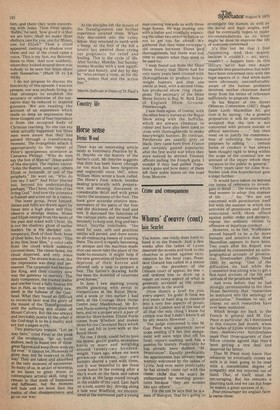Religion
Transfiguration
Martin Sullivan
August 6 is the Feast of the Transfiguration and a word about the occasion is in season. The report of it, given in the first three Gospels, runs : "Six days later Jesus took Peter, James and John with Him and led them up a high mountain where they were alone; and in their presence He was transfigured; His clothes became dazzling white with a whiteness no bleacher on earth could equal. They saw Elijah appear and Moses with him, and there they were conversing with Jesus. Then Peter spoke, 'Rabbi,' he said, 'how good it is that we are here; Shall we make three shelters, one for you, one for Moses, one for Elijah?' Then a cloud appeared, casting its shadow over them and out of the cloud came a voice, 'This is my Son, my Beloved; listen to Him.' And now suddenly, when they looked around there was nobody to be seen but Jesus alone • with themselves." (Mark IX vv 2-6 NEB).
I do not propose to discuss the historicity of this episode. I was not present, nor was anybody living, so that attempts to establish the accuracy or otherwise of the narrative may be reduced to inspired guesses. We are reading the account of an experience which made so deep an impression that three Gospels out of four reproduce it from the accepted body of Christian teaching. No one can say what actually happened, but three men were aware that they had passed through a transforming moment. The evangelists attach it appropriately to the report of Peter's spontaneous utterance at Caesarea Philippi. "Who do men say the Son of Man is?" Jesus asked of His disciples. The replies varied: "John the Baptist, some say, others Elijah or Jeremiah, or one of the prophets." He went on, "Who do you say I am?" And Peter blurted out, beyond his understanding perhaps, "The Christ, the Son of the living God." And now the utterance is framed and acted out in a cameo.
The inner group, Peter himself, James and John are drawn apart by Jesus into a high place and they observe a strange drama. Moses and Elijah emerge from the mists of the past and stand with Christ. He is not the shadowy ghost of earlier leaders, 'He is His disciples' contemporary, flesh of their flesh, bone of their bone, but He is more. "This is my Son, hear Him," a voice calls from the cloud which suddenly covered them. The vision faded, the cloud dispersed, and only Jesus remained. The dream was over, but the impression was deep and permanent. The carpenter had become the King, and their country now was the gateway to eternity. The daily companion, the trusted leader and teacher lived a fully human life but in Him, as they suddenly saw, dwelt in the fullness of the Godhead. What they found so difficult to reconcile later was the glory of the mount of the Transfiguration with the suffering and shame of Mount Calvary. But the one always and inevitably points to the other if the God-man is to be a reality and not just a pagan myth. Two postscripts remain. "Let us stay here," cried Peter at the peak of the revelation, "let us build shelters, each to house one of these great figures and keep them with us for ever." It cannot be. Moments of glory may not be reserved in this way. They are taken and absorbed at the very moment of encounter. So many of us, in an act of worship, as we listen to great music or contemplate artistic skill, long to remain in that state of happiness and fulfilment, but the moment will fade and we must face the reality of that disappearance and go on our way. As the disciples left the mount of the Transfiguration one further experience awaited them. When they descended into the valley below, they returned to earth with a bump. At the foot of the hill a lunatic boy awaited them crying out poignantly for relief and healing. This is the cycle of life. After Sunday, Monday, but Sunday invests Monday with a new significance and beauty, and day by day he "who sweeps a room, as for thy laws, makes that and the action fine."' Martin Sullivan is Dean of St Paul's



































 Previous page
Previous page